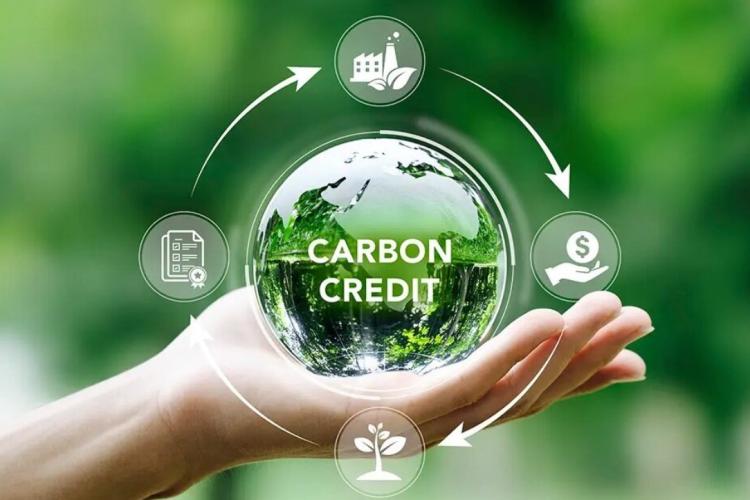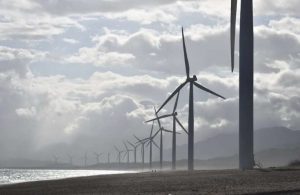
India’s carbon credit market: India has taken a strategically significant step in aligning its development ambitions with climate resilience. As the world’s most populous country grapples with the competing imperatives of rural livelihoods, food security, economic growth, and emissions reduction, the challenge of decarbonising agriculture—its economic backbone—has come into sharp focus.
Agriculture accounts for nearly 20% of India’s total greenhouse gas emissions. Yet it remains one of the hardest sectors to decarbonise due to the complexities of fragmented landholdings, a predominance of smallholder farmers, and the biological nature of emissions from soil and livestock. Rural incomes remain low, and access to finance is patchy. In this landscape, carbon markets—if designed with care—could serve as a transformative tool for climate mitigation and rural prosperity.
READ | RBI plans a quiet rewiring of India’s financial system
A financial incentive for sustainability
A new report by the Environmental Defence Fund (EDF) explores the role carbon credits can play in reducing agricultural emissions. The central question it poses is this: can these markets be structured in a way that works not just for global corporations, but also for Indian farmers and the climate?
Carbon markets provide a mechanism to reward farmers financially for adopting sustainable practices that reduce or remove emissions. By shifting to methods such as better fertilizer management, no-till farming, cover cropping, and improved livestock care, farmers can generate carbon credits—essentially certificates for emissions reductions—that can be sold to companies or governments seeking to offset their own carbon footprints.
For India’s agricultural sector, the theoretical potential is significant. Practices like agroforestry or improved manure management could both sequester carbon and reduce methane emissions. With nearly half the population reliant on agriculture, these markets, if implemented effectively, could provide supplemental income while accelerating India’s climate commitments.
Challenges that demand a grounded approach
However, the path to establishing a credible and equitable agricultural carbon market is far from simple.
Credibility and scientific integrity: Global carbon markets have been marred by questions over the legitimacy of credits—particularly regarding additionality (would the reductions have happened anyway?) and permanence (will the carbon stay sequestered over time?). For India to avoid similar pitfalls, it must build its system on a strong foundation of science and governance. The Ministry of Agriculture and Farmers’ Welfare’s recent guidelines on this front are a welcome first step.
Scale and verification: India’s agricultural landscape is dominated by smallholders, most of whom cultivate less than two hectares of land. Monitoring, reporting, and verification (MRV) of emission reductions at this scale is costly and complex. If these administrative burdens are passed on to farmers, the carbon market will collapse before it gains traction.
Beyond carbon pricing: Uncertain and often volatile carbon prices will not be enough to convince farmers to change practices. The real incentives lie in better yields, lower input costs, and assured market access. Public-private collaboration will be essential to de-risk farmer participation, with upfront financing, technical support, and clear guarantees.

Not all carbon credits are created equal
The EDF report highlights that carbon credits vary widely in their scientific certainty. High-certainty credits—such as those from agroforestry or industrial-scale manure digesters—are based on transparent methodologies, verifiable baselines, and stringent MRV protocols. These tend to attract higher market prices and deliver real climate benefits.
Conversely, low-certainty credits—such as those based on loosely estimated increases in soil carbon—often lack credible baselines or are difficult to monitor. Worse, they may credit reductions that would have happened anyway. These undermine both the environmental integrity of the market and the trust of farmers, leading to poor outcomes for all stakeholders.
A blueprint for a farmer-centric carbon market
India must design a carbon market that reflects its rural realities and national priorities. A few key principles should guide this process:
Aggregation models: Aggregating small farms through cooperatives, farmer-producer organisations (FPOs), and digital platforms can help achieve scale and lower transaction costs.
Quality over quantity: Enhancing the scientific robustness of Indian carbon credits will increase their value, attracting both buyers and investors and delivering higher returns to farmers.
Blended finance: Public funds, concessional capital, and private investment must converge to provide farmers with the upfront resources they need to adopt sustainable practices.
Beyond carbon: Credit programs should align with broader goals like improving soil health, conserving water, and enhancing rural resilience.
The opportunity of climate leadership
India has positioned itself as a global voice on climate justice and sustainable development. Integrating carbon markets into agricultural strategy can bolster this leadership—if these markets are built not just as tools for corporate offsets, but as platforms for Indian farmers to improve incomes, adapt to climate risks, and contribute meaningfully to a net-zero future.
The moment is ripe. But the solution must be Indian in design—rooted in science, focused on equity, and responsive to the lived realities of farmers. Only then can the promise of agricultural carbon markets be fully realised.
India has an opportunity to craft a climate-smart rural economy that works for its people and the planet. Its farmers deserve nothing less.
Hisham Mundol is Chief Advisor, India, Environmental Defence Fund.
